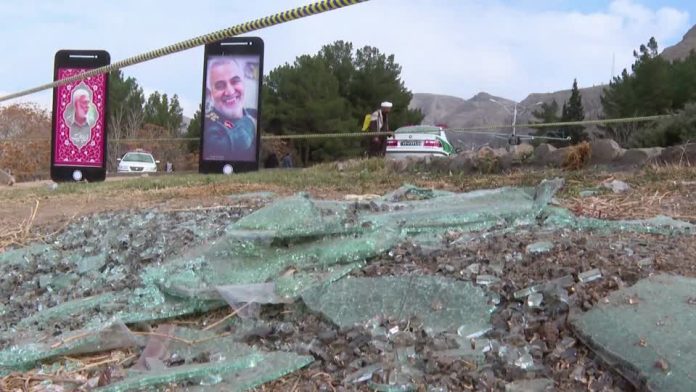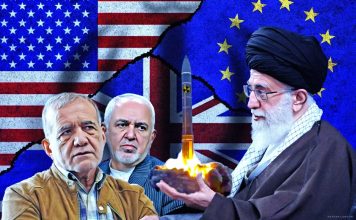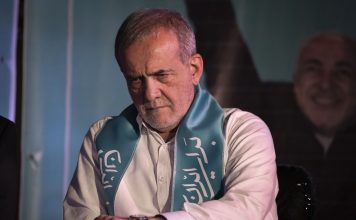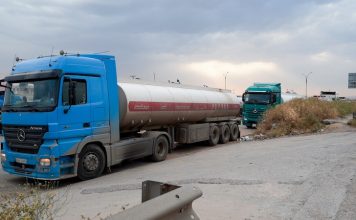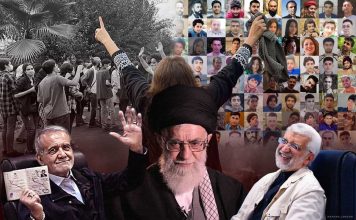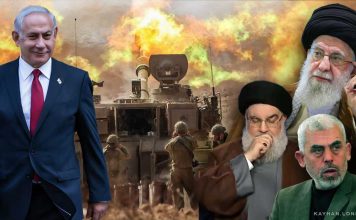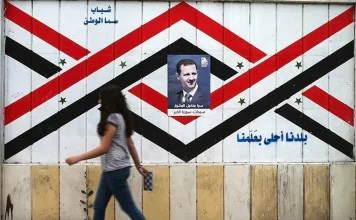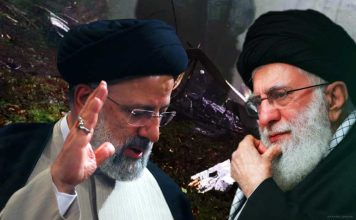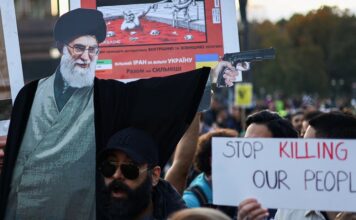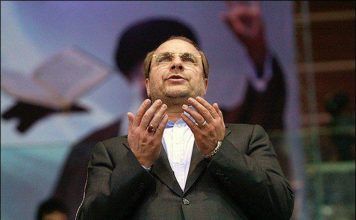By Ahmad Rafat
Iranian intelligence agencies have blamed Daesh (ISIS) and even Israel for the two bomb attacks on Jan. 3, which killed 90 people and injured 200 in the southeastern province of Kerman. Yet some in the country believe that the Islamic Republic itself was the true culprit.
The attacks occurred on the fourth anniversary of the death of Lieutenant General Ghasem Soleimani, the former commander of the Islamic Revolutionary Guards Corps Qods Force (IRGC-QF), who was killed in a targeted U.S. drone attack on Baghdad International Airport on Jan. 3, 2020.
[aesop_image img=”https://kayhanlife.com/wp-content/uploads/2024/01/2024-01-03T162710Z_1250677625_RC2AA5AMHDBU_RTRMADP_3_IRAN-BLAST-SOLEIMANI.jpg” panorama=”off” credit=”People gather at the scene of explosions during a ceremony held to mark the death of IRGC General Qassem Soleimani, in Kerman, Iran, January 3, 2024. ” align=”center” lightbox=”on” captionsrc=”custom” captionposition=”left” revealfx=”off” overlay_revealfx=”off”]
Not only has the government’s official report failed to identify the perpetrators of the terrorist incident, it has added to the prevailing ambiguity. It is unclear how many people were arrested in the days leading up to this incident.
Curiously, the Iranian authorities did not have greater security measures in place to protect the crowd that gathered to honor Ghasem Soleimani, whom the Islamic Republic regarded as its symbol of authority in the region.
Also puzzling was the notable absence of Soleimani’s family, senior IRGC commanders, and the country’s top officials at the ceremony commemorating him.
The lack of substantive information that could help identify the perpetrators of these terrorist acts has led to wide speculation about who might have been behind the attacks.
However, among the current theories, one could be closer to the truth: a possible cooperation between elements within the Iranian state, an IRGC faction, and the group known as “Isis in Khorasan.”
ISIS has divided the globe into five parts, with relatively independent groups operating in each sector. Khorasan ISIS operates in Afghanistan, Iran, Turkmenistan, Uzbekistan, Kirgizstan, and Kazakhstan.
OPINION: Iranian State May Have Masterminded Deadly Attack on Shiraz Mosque
Although ISIS considers it its moral duty to kill “Shia infidels,” the group was created with the help of the Islamic Republic and the regime of Syrian President Bashar al-Assad at the start of the Syrian civil war in 2011.
Some 200 Islamist prisoners were released in Homs in western Syria at the time. Several Syrian military officers who had joined the Free Syrian Army (FSA) to fight against the Bashar al-Assad regime claimed that the Sunni extremists were released from prison at the behest of Ghasem Soleimani.
The aim of creating an extremist group was to oppose democratic forces in Syria. The hope was that the emergence of a new Al Qaeda-like group in Syria would spread fear through the region and reduce pressure on Bashar al-Assad’s regime, which had become an international pariah.
Fearing the establishment of a new Al Qaeda-like group forced the West to accept Bashar al-Assad’s regime. However, in the years that followed, Daesh expanded its sphere of influence in the region, posing a severe threat to the West, Syria, and the Islamic Republic.
While Daesh does not control any territory and poses no significant threat these days, it is one of a dozen terrorist groups operating in the Middle East and Africa. Terrorism remains a clear and present danger in today’s world, as was demonstrated by the Oct. 7 Hamas attack on Israel, which sparked the war in Gaza.
The Islamic Republic regime’s three principal factions today coexist and work against each other simultaneously. The winning faction lends its unequivocal support to Iran’s Supreme Leader, Ali Khamenei, and his son Mojtaba.
The second faction consists of extremists who look to the East, especially Russia. They believe that the Islamic Republic can become a regional power by creating regional tensions. They advocate greater cooperation with extremist elements and terrorist organizations in the Middle East.
In the past, this faction offered refuge in Iran to Al Qaeda leaders who escaped Afghanistan after the U.S. attacks against the Taliban in 2001. Some believe that this group has ties with Khorasan ISIS nowadays.
The third faction includes institutions and individuals who believe that Iran must come to some agreement with the West. Economic mafias ruling the country are part of this movement.
The extremist faction is dissatisfied with Ali Khamenei’s measured proxy war following Hamas’s attack on Israel and the subsequent war in Gaza and would like to see the conflict expanded.
Getting Khorasan ISIS involved is exactly the same thing as unleashing Islamic terrorists in Syria during the public unrest. By accusing Daesh of the two bomb attacks in Kerman, the Iranian regime aims to convince the public that without the Islamic Republic, the country would plunge into chaos and fall victim to violent terror attacks.
It is doubtful that these plans would yield the intended result for the regime, given that a recent opinion poll conducted by the Majlis (Iranian Parliament) showed that 83 percent of the population holds the Islamic Republic responsible for their woes.
It is noteworthy that, in the past, the government blamed similar terrorist bombings on Daesh and Al Qaeda, but it later emerged that factions within the security apparatus or the IRGC carried them out.
These included an attack on the Imam Reza Shrine in Mashhad, the capital of the northeastern province of Khorasan Razavi, on June 20, 1994, and two separate attacks on the Shah Cheragh Mosque in Shiraz, the capital of the south-central province of Fars: one on Oct. 26, 2022, and the second on Aug. 13, 2023.
OPINION: Iranian State May Have Masterminded Deadly Attack on Shiraz Mosque

